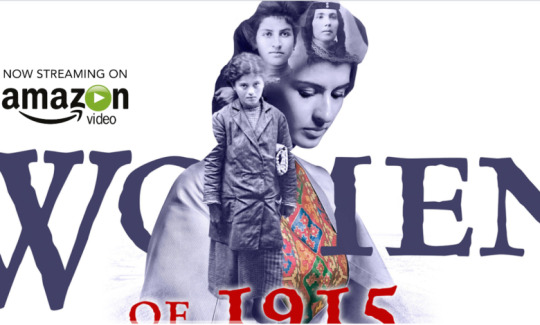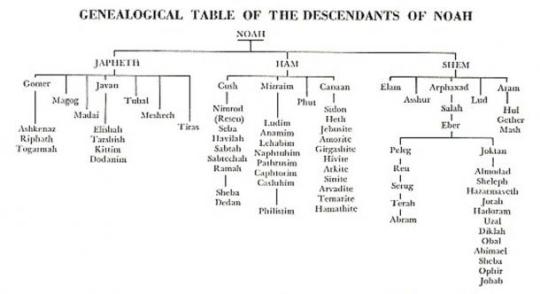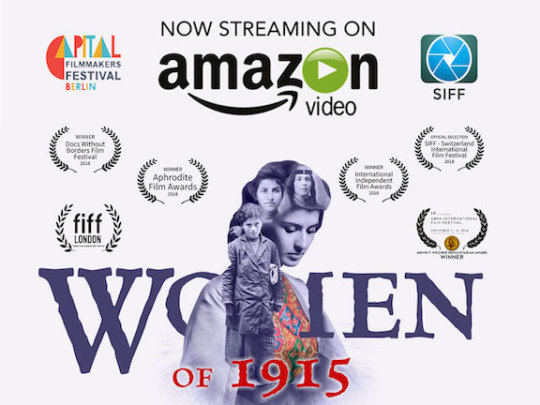#Armenoid
Text
The ‘Dynastic Race’ and the Biblical ‘Japheth’ Part II: Ethnology and Influence | Ancient Origins
The ‘Dynastic Race’ and the Biblical ‘Japheth’ Part II: Ethnology and Influence | Ancient Origins
https://www.ancient-origins.net/human-origins-religions/dynastic-race-and-biblical-japheth-part-ii-ethnology-and-influence-008967

View On WordPress
#9th century BC#Akkad#Alpine#Anatolia#Andalusia#Armenoid#Ashkenaz#Asia#Balkians#Beaker Folk#bible#Brachycephalic#Bretannus#Bretons#Cappadocian#Celtine#Celts#Celtus#Central Europe#Chalcolithic Era#Cimmerians#circa 1300 BC#circa 750 BC#Corded Ware Folk#Cymry#Dolichocephalic#Elam#Gamer#Genesis 10#Genesis 10:2
0 notes
Text
Weekly Wikipedia repairs roundup
Kassite deities - not even a topic I am very interested in, but this article had so much utter nonsense in it - articles from 1885(!), Nanaya and Laguda as deities of Kassite origin, Mesopotamian symbols from the Kassite period as culturally Kassite symbols, Indo-European speculative nonsense, a book using the word “Armenoid” (sic) as a source - that I had no choice but to put it out of its misery, and resurrect in a new, better (and considerably extended) form. Learn all there is to learn about Harbe, Sah, Kamulla and friends - which is not much, but hey! Feat. special cameos from the ethnic stereotype goddess Kaššītu and “Kassite Yarikh” from Ugarit.
Dumuzi-abzu - the OTHER, female, Dumuzi who might be the ORIGINAL Dumuzi. Has no real connection to Dumuzi (male) in terms of function, other than that one love poem apparently confused them (for grammatical reasons I could not include it in my blog article about Ninshubur and plausible gay moments in Mesopotamian literature). Page created from scratch.
Manuzi - a small time Hurrian mountain god slash minor weather god with a pet eagle. There isn’t all that much to say about him, I just realized that if I won’t fix nobody else will, and I want every Hurrian deity’s page to be more or less credible for the sake of my planned Hurrian god list article.
Barama - wife of Kura, the head god of Ebla. Her name might mean something like “full of color,” and there isn’t exactly much info about her since all we have to rely on is one explanatory text for a romantic royal date in the family mausoleum which apparently was necessary to annually renew Barama and her husband, and some offering lists. Page made from scratch, for completion’s sake.
Kura - the head god of Ebla. You know, the article ended up being surprisingly long, considering how little evidence from Ebla has theological character. Page originally made by me last summer, and only expanded now.
Ninegal aka Belet Ekalli(m) aka Pentikalli - goddess of palaces, with a name which is not exactly creative, but which definitely does the trick. The name can function as an epithet of Inanna, but when treated as a separate goddess, Ninegal instead seems to operate rather closely to Nungal, the goddess of prisons, whose page I took care of in february.
Shul-utula - another god I do not really have much interest in whose page I only fixed because I’m tired of Michael Jordan, ''Encyclopedia of Gods,'' Kyle Cathie Limited, 2002.
Laguda - while it is not incorrect to say that for the most part there was no such a thing as a major Mesopotamian sea god, and that the sea was more of a religious concern among the Hurrians or in Ugarit, Laguda is one of the three most notable exceptions from this rule (you can stretch it a bit by adding gods associated with fishing but that’s a matter for another day), the other two being Sirsir and Lugal’abba. He was seemingly the god of the Persian Gulf. Page created from scratch to make sure nobody can revert my removal of Laguda from among Kassite deities.
Sirsir - the god of sailors, possibly depicted as a slightly morbid looking boat-snake-human hybrid. I had to link his article in Laguda’s and as a result learned that the only source it uses is an atrocious hoax, Simon Necronomicon, so I had no choice but to fix it. Fifteen years had passed without anyone doing something about this! FIFTEEN!
Annunitum - I called Nanaya the bootleg Inanna par excellence but you know what, I think “epithet of Ishtar from Sargonic royal inscriptions turned separate deity” might actually be a better candidate for this title. Article created from scratch.
Tashmishu - brother of Teshub (the Hurrian king of gods) and Shaushka (Shaushka). Addresses own brother as “my lord” which is kind of funny. He is also his sukkal, at least in myths, though he has to compete for that spot with the god Tenu. There’s a mildly gruesome brief description of mutilation in the myth section so careful out there if that might bug you. Article created from scratch.
17 notes
·
View notes
Text
Pls refrain from using the term "armenoid" if you are not going to be critical about it ty<3
5 notes
·
View notes
Text
literally used the word “armenoid” fucking yikes
1 note
·
View note
Text
Paso / Templeton winery with good food option.
Curious if you could point me in the right direction for her birthday lunch. We know tons of wineries that we like wine at but have never done one of the higher end food pairing experiences.
Not daou
submitted by /u/Armenoid
[link] [comments]
from wine: red or white, the stuff you drink https://ift.tt/GMsdK8h
0 notes
Text
Anything I can do to get this prune to fruit? Plenty of bees by it but I didn’t see flowers last spring

submitted by /u/Armenoid
[link] [comments]
from Gardening, Plants, and Agriculture. https://ift.tt/3y3k5uS
0 notes
Text
蘇馬利亞、古 埃 及、巴 比 倫(一)
Will Durant
The story of civilization
第一卷 出版於 1935,第十卷 出版於 1968。
幼獅文化 1972年 七月 初版,1972 年 八月 二版
(文明故事便覽)
蘇馬利亞、古 埃 及、巴 比 倫(一)
蘇馬利亞文明
就我們目前所知,在許多方面,蘇馬利亞文明都是人類文化
的開端。國家、灌溉、文字、法典、學校、圖書館、宮室、
廟宇,都是始於 蘇馬利亞。不過壞的方面,不少也是 蘇馬利
亞人 所創始,比如:奴隸制度、專制政治、教會統制、
帝國主義的侵略戰爭。蘇馬利亞 是否就是人類最早的文化?
問題並不簡單。 與 蘇馬利亞 有著類似文化的其實還有 巴比倫
及 亞述。
今天的西方文明,也可以說就是歐美文明。歐美文明要說係
肇源於 克里特、希臘、羅馬,不如說是 近東。「亞利安人」 的
文明係來自 巴比倫 和 埃及。希臘文明,絕大部份來自 近東
各城市。
現在比較確鑿的證據倒是文化係肇源於 美索不達米亞,然後
擴及 埃及。
101歷史教室:偉大的美索不達米亞《國家地理》雜誌- YouTube
【大英博物馆】03 — 高科技文明:美索不达米亚/两河流域文明 - YouTube
面白い光景の連続です!
https://www.youtube.com/watch?v=hW4heMN-AfA
Yuuki 小姐:請試試炸的咖哩潤餅
https://www.youtube.com/watch?v=DGgxUvL1Ntk
寶塚歌劇團
https://www.youtube.com/watch?v=CkWGLgif1ms&t=53s
*****
古 埃 及
Ancient Monuments of Egypt in 4K Ultra HD - YouTube
大家都很熟悉埃及豔后這個名字,但卻很少提及他的生平及研究,她
竟有何種魅力,能在歷史上迷倒眾人?【埃及失落寶藏】- YouTube
古 埃 及- YouTube
Ancient Monuments of Egypt - YouTube
偉大、壯觀,這是金字塔給人的印象,然而建金字塔的原因只因為
裡面的國王想要永生。
尼羅河的西岸,似乎屬於死人的世界,埃及學專家在這裡發掘到
不少陵墓。據發掘者說進入陵墓有著一絲絲的涼意,偶而還發現
留在沙上的腳印。
埃及文化 的精華就在 尼羅河東岸 的 Luxor。當 Amenhotep 三世
統治埃及之際。他利用 Thutmose 三世 的戰利品,修建他壯觀
美麗舉世無匹的宮殿,可惜修到一半他就死了。於是工程停頓了
下來,直到 Rameses 二世執政,續行修建始告完成。然自輟工
至開工,已經一百多年過去了。
AMENHOTEP III|THE RICHEST PHARAOH OF ANCIENT EGYPT|৩য় আমেনহোটেপ|মিশরের সবচেয়ে ধনি| ANCIENTS EXPLORED - YouTube
這座宮殿的建築迄今已有三千年。而這樣的建築係出自一些剛由
野蠻進入文明的人之手,變不能不對埃及人佩服到五體投地。
Luxor 宮殿已經夠美,但將之與 Karnak 的神廟一比,卻又膛乎其
了。此座神廟,經埃及五十多位國王先後經營 - 始於古王國最後
一朝,直至 托勒密王朝(ptolemies)時代,遂成一個占地 60英畝
的偉大建築。
EGYPT: Karnak Temples - Luxor - YouTube
埃及人,據推斷,一半來自非洲其他地區,即 努比亞、衣索比亞、
利比亞,一半來自 西亞 的 閃族 或 Armenoid人,大半具有較高的
文化。他們或為和平移住,或為武裝入侵,由於長時間與當地民族
通婚,而誕生了新民族,約當 公元前 3000年 至 4000年左右。
西元 650年左右,回教徒征服了 埃及,處處構築回教特有的
城池與圓頂教堂,和 埃及 已經不相干。 今日風沙所侵襲的僅是
埃及 的軀體,至於 埃及 的靈魂則與世長存。這些文化包括農業的
改良、冶金術的發展、工業的進步、幾何、戶口調查等等等。
在埃及史上,第四王朝顯得非常突出。有人認為是前朝開發礦產
致富;有人認為是地中海商業繁榮所致;有人則認為是 Khufu,
埃及第一位法老的領導有方。
木乃伊如何製作?
首先以鐵鉤自鼻腔勾出腦髓,再注入藥料。其次,用石刀把屍體
從側面剖開。取出內臟後,以棕酒沖洗腹腔,撒以香料,填入
沒藥、肉桂等。然後縫合。將屍體浸泡天然碳酸鈉溶液,不超過
70天,再取出身體,沖洗乾淨,塗以帶膠質之蠟布細細包裹,再置
入人形木匣。
此片当年差点让20世纪福克斯破产《埃及艳后》一部无与伦比的好莱坞大片 - YouTube
埃及11大必去旅遊景點
https://www.skyscanner.com.tw/news/egypt-travel-tips-20171
*****
巴 比 倫
https://www.youtube.com/watch?v=ya1Io0F468c
https://www.youtube.com/watch?v=tiIWfd_YThc
https://www.youtube.com/watch?v=FTBHGfULSC8
https://www.youtube.com/watch?v=8TcN6Ztmews
世界上許多文明之所以綿延不絕,是由於不斷的開創新境,
不斷注入新血之故。可以說, 巴比倫 及 猶太文明,是烏爾
文明 的新血;亞述的尼尼微 是 巴比倫 的新血;埃及、克里特、
希臘、羅馬,是烏爾 以降各種文明的新血。 今天去 巴比倫 遺址
參觀的人,一定不相信沿 幼發拉底河 這一片乾燥的荒邱,會是
一個文化璀璨而富有的古國首都。但 巴比倫創造了天文學,豐富
了醫學等等。 巴比倫 的開端者是一位強而有力的人物 漢謨拉比
(B .C . 2123-2081)。他的部隊打過很多仗,手段殘忍,每戰
必勝。他以鐵腕制服了兩河流域的諸小邦,並頒布了 1902 年
出土於 Susa 的 「漢謨拉比法典」。 他的另一個成就是,開了一條
溝通 Kish 和 波斯灣 的運河。這條運河不但使一大片荒地變成良田,
而且使南部許多城市永絕水患之災。 巴比倫 在種族上有許多 閃族
的特點:黑頭髮、多鬍鬚、膚色略黑。在男性腰帶上,經常掛著
一顆小巧的印章,因為無論公私文書,非蓋章不生效。 巴比倫
東邊有垂涎 閃族 的 巴比倫 的財富,Kassites 族;漢謨拉比 逝世
後侵入 巴比倫,成了征服者。他們可能是新石器時代來自歐洲的
移民。此後幾百年間,巴比倫 政治杇隉不堪,科學藝術也毫無
進展,淪為 埃及 附庸。600 年後 趕走了 Kassites 族,之後的
400年 仍是一片毀亂。 結束此一局面的是新興強國 亞述。巴比倫
的反抗招來鎮壓,幾乎夷為平地,幸好繼任者 Esarhaddon 的溫厚
政策,巴比倫 又漸趨繁榮。 獨立後的 巴比倫 傳到 Nebuchadrezzar
二世 之手。儘管有人說他是個壞蛋,不學無術,有點瘋狂,但在
那個時代卻是 近東 最偉大的統治者;他也建造了 以巨石砌成,深入
雲端的高塔,以及 空中花園:
First Day of Autumn in Melbourne City Australia 2024 Walking Tour (youtube.com)
Tower of Babel
https://www.youtube.com/watch?v=w59OE8ddLxo&t=965s
深入雲端的空中花園
https://www.youtube.com/watch?v=OxgW9iWrU2w
希臘 的 興起(二)
https://iseilio-blog.tumblr.com/post/671675354819215360
Taiwan's Cultural and Ecological Diversity
https://www.youtube.com/watch?v=3_gJOWlW6ys
孫淑媚 /送君珠淚滴/[台灣好歌聲] (youtube.com)
0 notes
Note
Are you white?
I’m triracial but white-passing in Brazil and some African countries because I have very light brown color (cor moreno-clara) what makes me PoC. I descend from Amerinds (about 12%), Europeans (70%) and Africans (17%), I couldn’t see myself as black, I fit parde (triracial) but there’s still racial hierarchy in it. You could read this article talking about White Latines.
My specific race in anthropology is celtic gracile-med dinarized armenoid, I’m very similar to Sicilians and Turkish Italians. As white is a political-social identity I could say I’m white here, because culturally we had ethnic erasure.
3 notes
·
View notes
Text
Women of 1915: Armenian Genocide documentary starts streaming on Amazon
New Post has been published on https://armenia.in-the.news/culture/women-of-1915-armenian-genocide-documentary-starts-streaming-on-amazon-70307-08-03-2021/
Women of 1915: Armenian Genocide documentary starts streaming on Amazon


Multi-award-winning “Women of 1915” feature-length documentary film is starting to stream on Amazon Vide today in observance of International Women’s Day, Asbarez reports.
This documentary reveals that it was women who were left behind to experience the worst kind of torture and the most heroic form of resilience during the Armenian Genocide of 1915. The film delineates the stories of these women, along with the lasting impact they had on the lives they saved and touched.
“We decided to stream the premiere of ‘Women of 1915‘ on Amazon Video to coincide with International Women’s Day, because of the film’s universal appeal. One of the women profiled in our film is Victoria Artinian who, having survived the Armenian Genocide and the Great Fire of Smyrna in 1922, migrated to United States. From the ‘ashes’ of death and destruction in her homeland, she succeeded in overcoming these impossible traumatic events to live the American Dream. Amazingly, she also helped raise her daughter’s adopted son who, beginning in his 20s set a path to literally change the world for Victoria Artinian was Steve Job’s adoptive grandmother,” said four-time Emmy Award-winning documentary filmmaker, Bared Maronian.
Additionally, “Women of 1915” combines facts and emotions to honor the brave American and European women including American volunteer Mary Louise Graffam, Japanese diplomat Diana Apkar, and Danish missionary Maria Jacobsen, who dedicated their lives to rescue the survivors of the Armenian Genocide, while risking their own.
“Women of 1915” was made possible by a principal partnership between Armenoid Productions, Armenian Relief Society of Eastern USA and Ararat Eskijian Museum. The Armenian Relief Society of Canada, Armenian Relief Society of Western USA, AGBU and AGBU –Hye Geen also made considerable contributions to this project.
Screened in over 40 cities around the world, this documentary was officially selected by the Switzerland International Film Festival and has received Best Documentary Awards at the International Independent Film Awards, Aphrodite Film Awards, Docs Without Borders Film Festival, and the Pomegranate Film Festival. The ARPA Film Festival’s most prestigious Armin T. Wegner Humanitarian Award honored Bared Maronian, the director of “Women of 1915.”
The creative team behind “Women of 1915” includes, Gloria Sanders as narrator, Bardig Kouyoumdjian as the director of photography, C-rouge as the composer, and Hooshere as the performer. Original soundtrack is available at Spotify and Apple Music.
Read original article here.
0 notes
Text
The ‘Dynastic Race’ and the Biblical ‘Japheth’ – Part I: After the Deluge | Ancient Origins
The ‘Dynastic Race’ and the Biblical ‘Japheth’ – Part I: After the Deluge | Ancient Origins
https://www.ancient-origins.net/human-origins-religions/dynastic-race-and-biblical-japheth-part-i-after-deluge-008956

View On WordPress
#2400 BC#3500 BC#4000 BC#5000 BC#5400 BC#Amorites#Anatolia#Arabia#Aramean#Armenoid#Assyria#Badari#Badarian Period#Bhāgavata Purāna VIII 24#Bishkent#Brachycephalic#Caucasia#circa 1500 BC#circa 1700 BC#circa 2000 BC#Circa 2100 BC#circa 2200 BC#circa 2340 BC#circa 2400 BC#circa 2900 BC#Crete#Cyprus#Delta#dolihocephalic#Dravidians
0 notes
Text
Working on what I can only describe as the single most nightmarish wikipedia article I have witnessed yet
Sources from 1885, 1907, 1916; a modern source using the phrase “Armenoid”; questionable proto-Indo-European ventures; attributing false claims to a modern, credible author who does not make them (I downloaded the book in mention to make sure!); misidentifying origin of deities...
8 notes
·
View notes
Photo

Keep it sliding smoothly by Armenoid
Follow the Mustard Gang!
0 notes
Text
Do you know what happened to the bark on our young avocado?

submitted by /u/Armenoid
[link] [comments]
from Gardening, Plants, and Agriculture. https://ift.tt/3EpfLsv
0 notes
Text
i read “the canaanites” by john gray!
it was very much a book from the 60s, the author didn’t question the idea that the hebrews were a distinct ethnic element that exodus’d their way from egypt to canaan at an identifiable period in time, and of course he talks about races and phrenology (new word: “armenoid”) and so on
but idk, i always like it when a text can just expound on stuff, and it's always cool to hear about things that made it into the modern world from ancient egypt or babylon via the bible, and a lot of those are relics of a non-monotheistic era that kinda made it into the old testament
i also like how he took the time to tell us which sculptures and vases and other artistic artifacts he thought sucked, like, what better to add to a chapter on archeology than your own personal opinions on cypriot-mycenaean potters cutting corners on the amphorae they sold in the port district in ugarit
1 note
·
View note
Text
‘Women of 1915’ Will Begin Streaming on Amazon March 8, International Women’s Day
New Post has been published on https://armenia.in-the.news/culture/women-of-1915-will-begin-streaming-on-amazon-march-8-international-womens-day-70240-05-03-2021/
‘Women of 1915’ Will Begin Streaming on Amazon March 8, International Women’s Day

“Women on 1915″ will begin streaming on Amazon on March 8
COCONUT CREEK, Fla.––Armenoid Productions announced that its 2016 multi-award-winning “Women of 1915” feature-length documentary film is slated to stream on Amazon Video in observance of International Women’s Day on March 8. This documentary reveals that it was women who were left behind to experience the worst kind of torture and the most heroic form of resilience during the Armenian Genocide of 1915. The film delineates the stories of these women, along with the lasting impact they had on the lives they saved and touched.
“We decided to stream the premiere of ‘Women of 1915‘ on Amazon Video to coincide with International Women’s Day, because of the film’s universal appeal. One of the women profiled in our film is Victoria Artinian who, having survived the Armenian Genocide and the Great Fire of Smyrna in 1922, migrated to United States. From the ‘ashes’ of death and destruction in her homeland, she succeeded in overcoming these impossible traumatic events to live the American Dream. Amazingly, she also helped raise her daughter’s adopted son who, beginning in his 20s set a path to literally change the world for Victoria Artinian was Steve Job’s adoptive grandmother,” said four-time Emmy Award-winning documentary filmmaker, Bared Maronian.
Victoria Artinian, Steve Job’s adoptive grandmother is featured in “Women on 1915″
Additionally, “Women of 1915” combines facts and emotions to honor the brave American and European women including American volunteer Mary Louise Graffam, Japanese diplomat Diana Apkar, and Danish missionary Maria Jacobsen, who dedicated their lives to rescue the survivors of the Armenian Genocide, while risking their own.
“Women of 1915” was made possible by a principal partnership between Armenoid Productions, Armenian Relief Society of Eastern USA and Ararat Eskijian Museum. The Armenian Relief Society of Canada, Armenian Relief Society of Western USA, AGBU and AGBU –Hye Geen also made considerable contributions to this project.
Screened in over 40 cities around the world, this documentary was officially selected by the Switzerland International Film Festival and has received Best Documentary Awards at the International Independent Film Awards, Aphrodite Film Awards, Docs Without Borders Film Festival, and the Pomegranate Film Festival. The ARPA Film Festival’s most prestigious Armin T. Wegner Humanitarian Award honored Bared Maronian, the director of “Women of 1915.”
The creative team behind “Women of 1915” includes, Gloria Sanders as narrator, Bardig Kouyoumdjian as the director of photography, C-rouge as the composer, and Hooshere as the performer. Original soundtrack is available at Spotify and Apple Music.
Bared Maronian’s most recent production Bloodless: The Path to Democracy , a collaboration between Armenoid Productions and Cultural Impact Foundation, is currently gaining rave reviews at international film festivals. It documents Armenia’s 2018 peaceful revolution. Maronian’s earlier 2013 documentary, Orphans of the Genocide, that examines the plight and survival efforts of the over 150,000 orphans of the Armenian Genocide, is currently available on Amazon Video.
Read original article here.
0 notes
